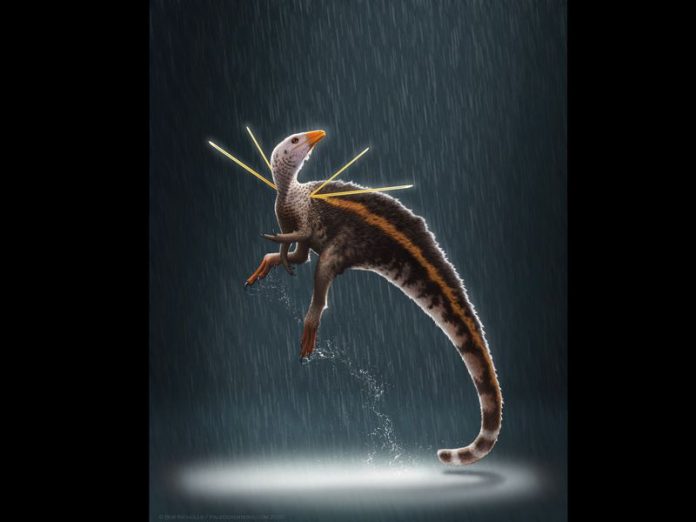The theropod, named Erythrovenator jacuiensis, meaning ‘red hunter of the Jacui River’, due to the red colour of the fossil and the area where it was found, in the Parana Basin, would have lived approximately 230 million years ago.
It is estimated to have been around two metres long with jaws full of sharp, blade like teeth to hunt and kill lizards, primitive mammals and insects.
The fossil which was found in 2017 is a single, extremely fragmented piece of the left femur measuring just 19 centimetres, has revealed details on the new genus of the Late Triassic period which would be the ancestor of well-known dinosaurs such as the Allosaurus, the Velociraptor and the Tyrannosaurus, as well as birds.
Paleontologist Dr. Rodrigo Muller, of the Federal University of Santa Maria, Brazil, said: “You could say it is the ‘Godfather’ of T.rex. Despite the small size, the animal was an apex predator. It was a fast and vicious hunter, with strong leg muscles. The animal had sharp and blade-like teeth, like other early theropods. We believe its skin had feather-like structures.”
The discovery has been published in the Journal of South American Earth Sciences.








